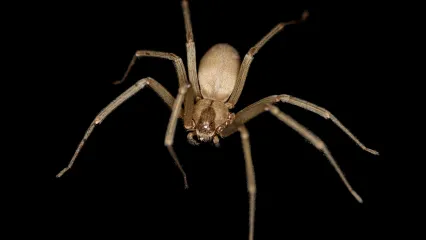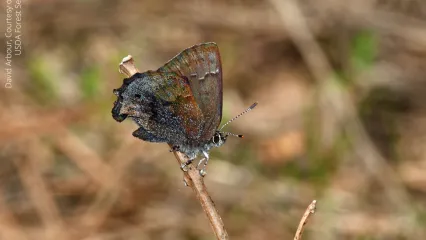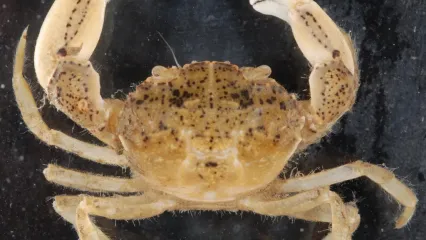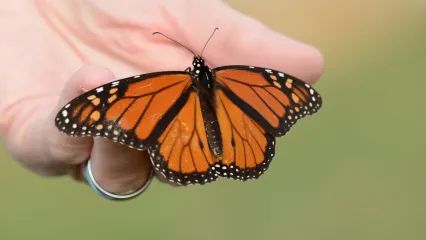
Description
They are found throughout the south central and Midwestern United States, but more specifically, they can probably be found in your garage or even your living room in all but the most western reaches of the Panhandle. We’ve all seen them, and they often spook us. We’re talking about none other than the brown recluse.
The brown recluse spider (Loxosceles reclusa) belongs to the Order Aranea (spiders) and the Family Sicarridae (six eyed spiders), but you may know them as simply “fiddlebacks” because of their most distinctive feature — the dark violin-shaped mark located on its back, with the neck of the violin pointing toward the abdomen of the spider.
This characteristic is not a reliable diagnostic feature, however. This marking is consistently found in adult brown recluses, and is sometimes less apparent in younger spiders. When the legs are extended, adults are usually about the size of a quarter although size can be quite variable. Coloration ranges from tan to dark brown. They lack any stripes, bands or mottling and the legs are long and thin. A more definitive diagnostic feature is the eye pattern. Most spiders have eight eyes but the brown recluse spider has a semicircular arrangement of six eyes in three groups of two eyes called a dyad. This is characteristic of all species in the family Sicarridae.
The brown recluse will typically only bite a human if it is threatened or touched. Their bite can be mild to serious in humans, and their hemolytic venom is toxic. The cells surrounding the puncture die as a result of the toxin, producing a black gangrenous spot. If untreated, the skin begins to rot and peel away from the area around the wound, exposing the underlying tissues.
Arachnophobia is a fear of spiders and is one the most common phobias. Brown recluses have an undeserved reputation of being aggressive spiders. They are not always aggressive and their bite is not always deadly. Brown recluse spiders help control populations of destructive and invasive insects. So next time your tempted to wish the world was free of spiders, remember to look at this spider as an important part of the environment.
Habitat
Brown recluses are able to withstand extreme temperatures and have become well adapted to living indoors with humans. During the day, they prefer to be secluded in dark areas away from human activity. They often line their daytime retreats with irregular webbing, which is used to form their egg sacs. However, like most spiders, these insectivorous spiders do not form webs to capture their prey. Webs strung along walls, ceilings, outdoor vegetation, and in other exposed areas are nearly always associated with other types of spiders. Instead, these spiders are scavengers. At night they come out to search for food. Usually they eat dead insects but sometimes they will inject their hemolytic venom into live prey.
Life Cycle
Before brown recluses mate, there is usually a courtship ritual. Males use chemotactic senses to find a female. Males mostly rely on the fine sensory hairs that cover the body and appendages to locate a female. But along with the sense of touch, males also have the ability to distinguish various chemical substances. Through this combined chemotactic sense, males find their mate by a scent that she leaves on the threads of her web. Males must announce their presence as a potential mate or the female may mistake them as potential prey. Once the female submits to the male’s advances, mating takes place. The female later lays hundreds of fertilized eggs in a silk cocoon that she attaches to a web or plant. She may even carry it with her. In two weeks, the eggs hatch and the young stay in the cocoon for a few weeks.
How To Observe
In nature, brown recluse spiders can be found under rocks, logs, woodpiles and debris. As mentioned, they are commonly found in houses and are considered synanthropic, meaning their populations benefit when living among humans. Artificial lights around houses attract their main dietary source — insects — which in turn attracts them.


